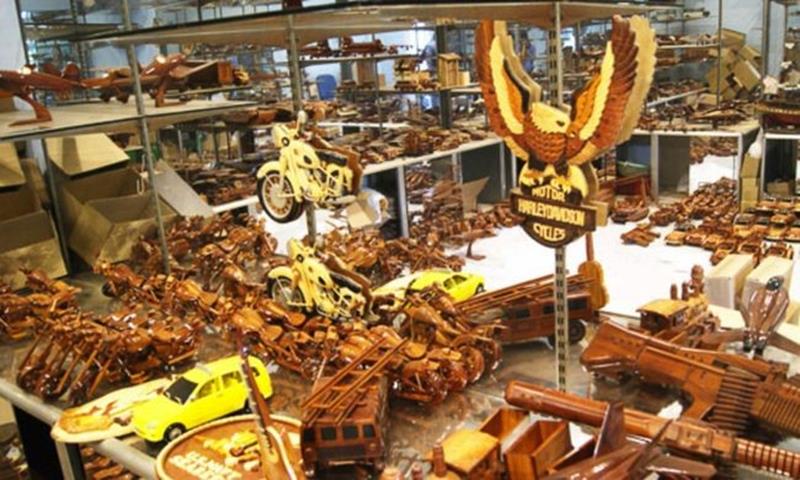(News Portal – Dong Nai) – In Binh Minh commune, Trang Bom district, there is a woodcraft village that has been in existence for over 40 years. Here, unique woodcraft models are created and exported to various countries around the world.

The models, made from leftover scraps, are transformed by artisans into intricate and diverse products.
The traditional woodcraft industry in Binh Minh commune originates from the traditional carpentry villages of Northern Vietnam, brought to the South by migrating residents more than half a century ago. However, the practice of recycling waste wood into exquisite woodcrafts only began in the early 1980s.
Binh Minh woodcraft first gained fame when a carpenter named Ky Van, from Tra Co hamlet, Binh Minh commune, used wood from a dead jackfruit tree in his garden to carve a boat with intricate details. He took this boat to Ho Chi Minh City and sold it to a Russian tourist who was so impressed that they purchased it as a souvenir to bring home.
According to Mr. Nguyen Thanh Nhan, owner of Thanh Nhan Woodcraft Manufacturing Facility, the demand for Thanh Nhan's woodcraft products has consistently outstripped supply for exports to markets in the U.S., France, Germany, and several other countries. Currently, there are over 500 different woodcraft products available in a wide range of materials, from affordable to premium woods. Recently, two products, wooden trains and wooden motorcycles, were awarded 4-star OCOP (One Commune One Product) certification by the Dong Nai Provincial People's Committee.
Mr. Mai Thien Tuan, Vice Chairman of Binh Minh Commune People's Committee, shared that from scrap woods, the talented hands of local artisans are capable of creating a wide variety of model products, ranging from rickshaws, cars, tanks, airplanes, helicopters, and boats to models of weapons and decorative items. These products are priced from a few dozen to several million Vietnamese Dongs per item. Additionally, Binh Minh woodcraft artisans accept custom orders to cater to tourists from around the world.
This is seen as a positive sign for the local traditional woodcraft village, helping many residents secure jobs, increase their incomes, and improve their quality of life. In the coming time, the local government plans to zone production facilities and households into a concentrated area to both support the development of the woodcraft industry and ensure environmental protection